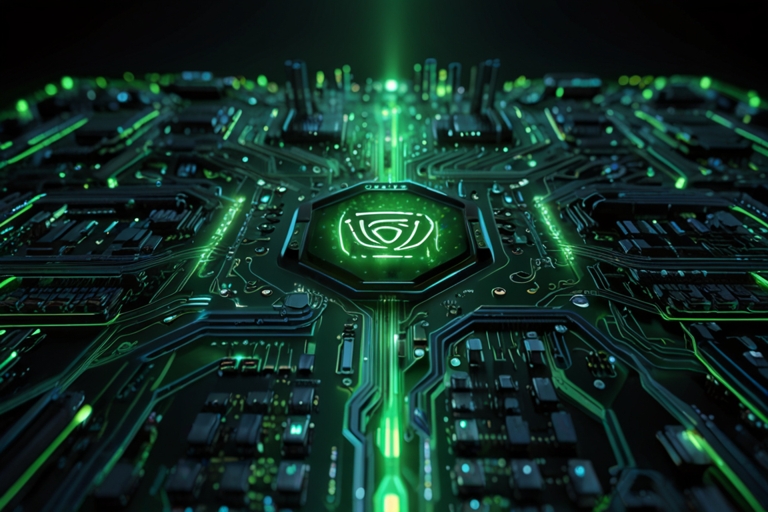
TL;DR
- Nvidia, the world’s top GPU maker, has aggressively expanded into AI venture capital, participating in dozens of funding rounds across the global startup ecosystem.
- Between 2023 and 2025, Nvidia backed major AI players like OpenAI, xAI, Mistral, Perplexity, and Waabi, fueling its AI dominance beyond chips.
- Its investment activity includes both direct funding and deals through NVentures, its dedicated corporate VC arm.
- Nvidia is not only shaping the AI software stack — it’s controlling the infrastructure via GPU-as-a-service players like CoreWeave and Lambda.
- With valuations soaring and IPO pipelines building, Nvidia’s strategic bets could redefine how AI infrastructure is built and monetized.
A Strategic Shift: From Chips to Capital
While Nvidia’s core business remains the high-performance GPU market, its AI strategy now clearly extends into startup capital and infrastructure ownership. In 2024 alone, Nvidia took part in 49 funding rounds, compared to just 34 in 2023, according to PitchBook data.
These figures exclude investments made through its formal VC arm, NVentures, which also scaled up significantly: from 2 deals in 2022 to 24 in 2024.
By early 2025, Nvidia had already participated in seven AI funding rounds, further accelerating its influence.
Betting on the Billion-Dollar Disruptors
At the top of Nvidia’s deal sheet is its $100 million stake in OpenAI, part of the company’s $6.6 billion round that valued the ChatGPT creator at $157 billion. Despite being overshadowed by Thrive’s $1.3 billion investment, Nvidia’s presence signals strategic importance.
The chipmaker also joined the cap table of xAI, Elon Musk’s AI venture, through its $6 billion Series A, raising eyebrows given OpenAI’s request that investors refrain from backing rivals.
Other high-profile bets include:
- Inflection AI: Nvidia co-led its $1.3 billion round, though the company was later partially absorbed by Microsoft.
- Wayve: A $1.05 billion investment in self-driving AI.
- Scale AI: Part of a $1 billion raise with Amazon, Meta, and others.
The Data
| Startup | Amount Raised | Nvidia Role / Focus Area | Source |
| OpenAI | $6.6B | $100M check to expand foundational AI | NYT |
| xAI | $6B | Participation despite OpenAI conflict | TechCrunch |
| Inflection AI | $1.3B | Early lead investment; later partial exit via Microsoft | CNBC |
| Perplexity | $500M | Repeat backer of AI search; valuation at $9B | PitchBook |
| CoreWeave | $221M | GPU cloud provider; valuation rose to $19B | Reuters |
Building AI Infrastructure: Chips, Clouds, and Capital
Nvidia’s investment strategy clearly favors companies aligned with its GPU-driven model. Startups like Lambda and CoreWeave rent out Nvidia GPUs for AI model training — effectively scaling demand for Nvidia’s hardware.
It has also taken positions in enterprise-grade large language model (LLM) developers such as:
- Cohere – $500M round
- Mistral AI – $640M Series B
- Together AI – $305M to scale open-source model infrastructure
By embedding itself in the AI value chain, Nvidia ensures it is not just the toolmaker — but also a platform builder.
AI Meets Robotics, Cloud, and Health
Nvidia’s bets span across AI domains:
- Figure AI: $675M investment in humanoid robotics
- Waabi: Autonomous trucking, $200M Series B
- Hippocratic AI: LLMs for healthcare use cases, raised $141M
- Sandbox AQ: AI and quantum computing convergence, raised $150M with Nvidia participation
These investments reflect a belief that AI will transform nearly every vertical, from transportation to diagnostics to financial modeling.
What Nvidia’s Bet on AI Means for the Market
Nvidia’s investment frenzy positions it as an overlord of the next-generation AI stack. From powering LLMs to backing startups building apps, tools, and GPU-powered clouds, Nvidia is creating an ecosystem moat few can match.
The company has even invested in startups offering “AI-in-a-box” cloud services and low-cost AI training methods, such as Sakana AI in Japan.
With IPOs on the horizon for companies like CoreWeave and Perplexity, Nvidia stands to benefit not just operationally — but financially — as equity stakes mature.
The Takeaway: Ecosystem Domination
Rather than just compete on chip specs, Nvidia is buying its way into AI dominance by:
- Seeding infrastructure: Backing GPU cloud providers
- Enabling innovation: Investing in frontier LLM and robotics firms
- Controlling access: Driving demand for its hardware through ownership
In the next 3–5 years, Nvidia’s deep integration into the AI economy will likely make it an indispensable part of how AI systems are built, trained, and deployed.






